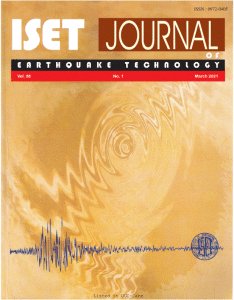Home > Issues & Journals
ON SINGLE STEP ALGORITHMS IN THE SOLUTION OF DYNAMIC LINEAR AND NONLINEAR PROBLEMS
Pankaj, Khalid Moin and Gajendra Barthwal
Paper No.: 342
|
Vol.: 31
|
No.: 3
|
September, 1994
|
pp. 117-139

Abstract
Dynamic analysis of structures for the evaluation of the timewise reeponse is often conducted using direct integration of equations of motion. A number of methods have been proposed for direct integration of these equations of motion. In this study two general families of single step algorithms for direct integration are considered vis the Generalized Newmark (GN) algorithm emanating from the generalization of the Newmark method and Single Step (SS) algorithm due to Zienkiewics, Wood and their coworkers. From these generalised forms a number of new and existing algorithms can be simulated. Stepwise procedure for GN and SS family of algo- rithms are developed in predictor – corrector form. From these procedures Newmark’s unconditionally stable algorithm, Houbolt (originally multistep) algorithm and Wilson method are simulated. These simulated procedures are applied to linear as well as in nonlinear problems. Each family is seen to have advantages as well as disadvantages over the other. It is seen that elastoplasticity does not alter the predominant frequency response of the system. It, however, introduces a zero frequency and some low frequency components in the response. It is also seen that strain softening plasticity can be successfully used with dynamic problems.
Keywords: Not Available
©2025. ISET. All Rights Reserved.